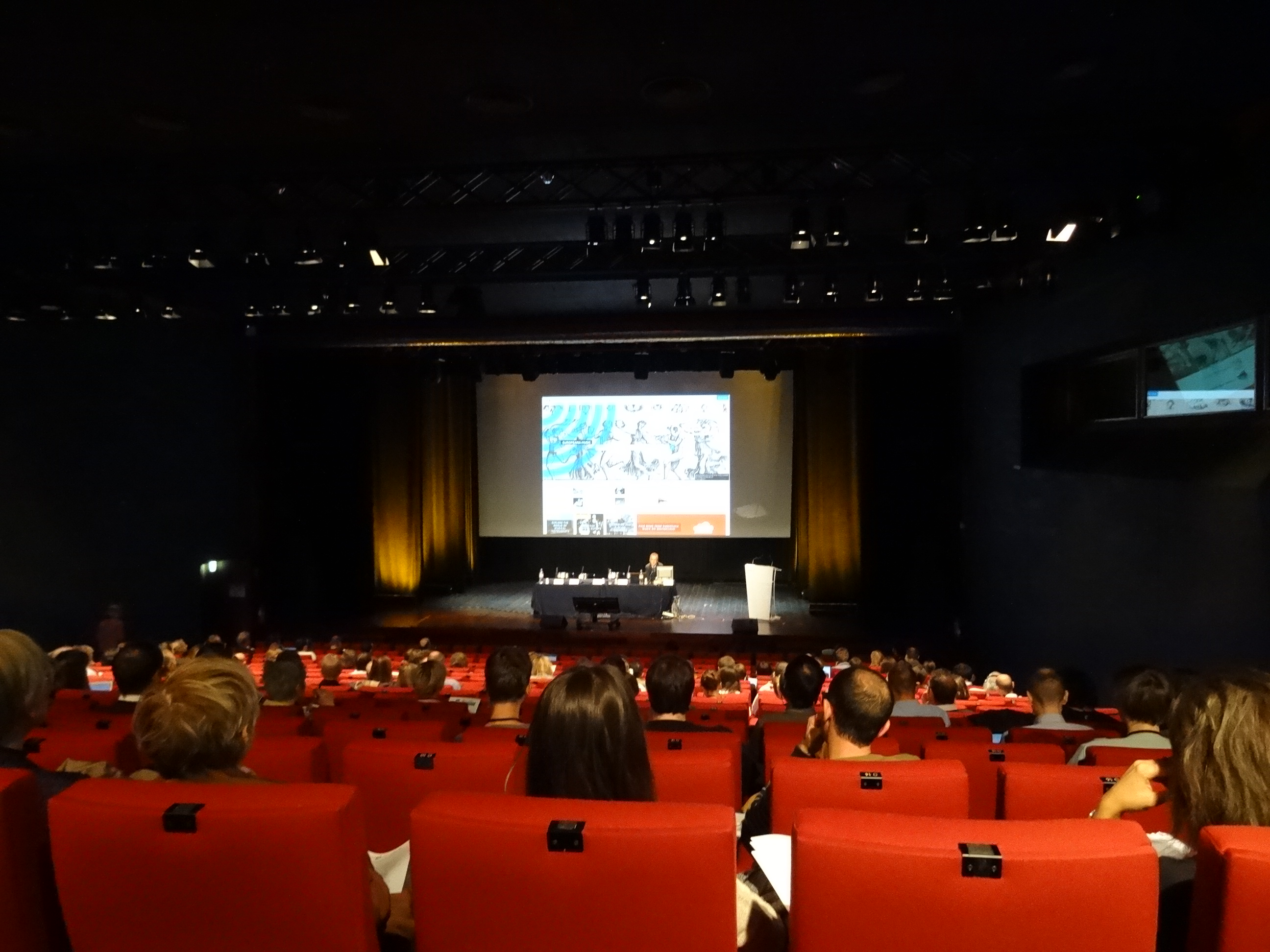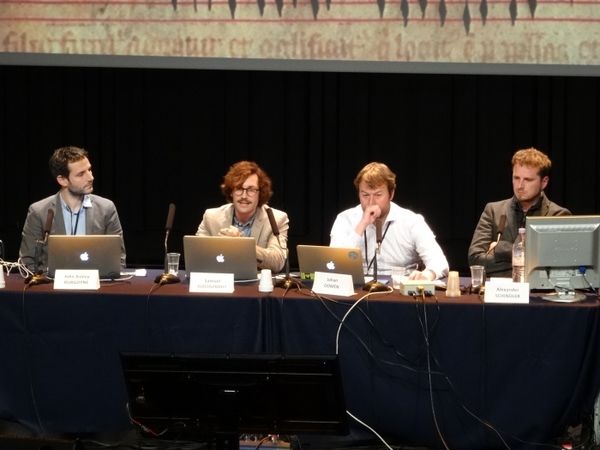Unleashing Europe’s audio heritage: #EUSounds15

On 2 October, over 200 sound archivists, music information retrieval experts, musicologists and musicians came together at the National Library of France for the first Europeana Sounds’ conference, The Future of Historic Sounds.
Time - both past and future - proved to be a motif for the day, and one well-suited to a conference about sound. As panellist Steen Kaargaard Nielsen from Aarhaus University observed, “listening to sound recordings from the past are the closest we come to time travelling… it immerses you, and creates an illusion of a still living past.”
As a prelude, conference-goers heard from Europeana Sounds’ coordinator Richard Ranft on the project’s ambition to “unleash”, in his words, “Europe’s audio heritage” and transform access to audio in Europeana.
Europeana’s soon-to-launch Music Channel, which you can try out, is one example of how the project has already started to do this, combining collections from all over Europe to give users a rich experience of the continent’s musical heritage.
As Europeana’s Product Development Manager David Haskiya explained, the Channel brings together sheet music, recordings, instruments and other music-related objects and by doing so, hints at the stories they have to tell together. But what kind of connections can we forge between items in the future? And what new narratives might we open up by doing so? As David suggested in his talk, there are still plenty of possibilities to explore.

Richard Ranft's Prelude, The Future of Historic Sounds, Image: Europeana Sounds CC0
The question of discovery was one tackled by a number of speakers during the course of the day. While plenty of online services give access to sound, digitised audio heritage, as Richard pointed out, remains relatively hidden. Sometimes the challenge is greater than just making sounds findable - there are a number of other barriers that stop heritage sounds circulating or being listened to in other ways - from technical challenges to restrictive legal access. Together, however, the consortium of Sounds partners are working hard to help make these obstacles a thing of the past.
The quest for openness
In the session on creating legal access to sound heritage, moderator Lisette Kalshoven from think tank Kennisland pointed out that the twentieth century black hole - where in-copyright works are inaccessible or absent online - affects audio heritage particularly acutely. Most archival sound recordings were created in this period so we start to understand why they are relatively scarce on Europeana.
Despite these restrictions, the session looked at some ways institutions can open up collections online - something the project is helping partners to do with Kennisland’s help. It was followed by a performance which showed the kind of creative potential openly licensed archival sounds offer artists. Electronic musician Matthew Herbert treated attendees to an explosive performance which remixed sounds - from seal cries to a German rendition of Hamlet’s famous soliloquy - contributed by partners to Europeana.
What's that tune?
Through his experimental remix, Herbert cleverly reminded everyone that sometimes, we appreciate sounds purely for the sonic experience they provide and the different textures we encounter as we listen to them. It’s this elusive quality that can make it difficult to categorise sounds or navigate to them via a search engine. They pose questions metadata can’t always answer alone. What makes a song catchy? Or conventional? How can I look for songs that sound like ones I already know?

Panellists in 'From listening to interaction: sound innovations - pt. I', Europeana Sounds CC0
As the panellists in the afternoon session on sound innovations all demonstrated, we’re making progress towards answering these puzzling questions. It’s an exciting time for music technology and the institutions looking to surface their digital sounds collections. Using his flute, Dr. Bryan Duggan gave us a taster of how the Sounds project is a part of this and introduced Tunepal, a collaboration with Europeana which offers a search-by-playing interface. By playing his flute on-stage, Duggan produced results in Tunepal - not only titles and scores, but a link to the tune in Europeana if available.
The day proved to be a fascinating journey through both the history of sound and the ways we can preserve and enjoy it - both today and in the years to come. It was also a brilliant introduction to the diverse and important work being done by Europeana Sounds and everyone involved in the project. To echo the speakers, the future’s definitely bright for Europe’s historic sounds!
Videos will be available in the coming weeks on Europeana Sounds’ blog, and you can see some of the presentations from the day too. And if you haven't already, why not check out the exhibition made with the help of the project partners, Recording and Playing Machines?
